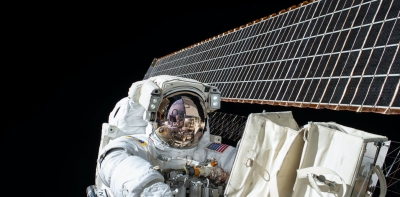
Many parts of the cardiovascular system (including the heart) are influenced by gravity. On Earth, for example, the veins in our legs work against gravity to get blood back to the heart. Without gravity, however, the heart and blood vessels change – and the longer the flight, the more severe the changes.
The size and shape of the heart, for example, changes with microgravity and the right and left ventricles decrease in mass. This may be because of a decrease in fluid volume (blood) and changes in myocardial mass. A human heart rate (number of beats per minute) is lower in space than on Earth, too. In fact, it has been found that the heart rate of individuals standing upright on the ISS is similar to their rate while lying down pre-flight on Earth. Blood pressure is also lower in space than on Earth.
The cardiac output of the heart – the amount of blood pumped out of the heart each minute – decreases in space, too. Without gravity, there is also a redistribution of the blood – more blood stays in the legs and less blood is returned to the heart, which leads to less blood being pumped out of the heart. Muscle atrophy also contributes to reduced blood flow to the lower limbs.
This reduced blood flow to the muscles, combined with the loss of muscle mass, impacts aerobic capacity.
Credit : The Conversation
Picture Credit : Google




